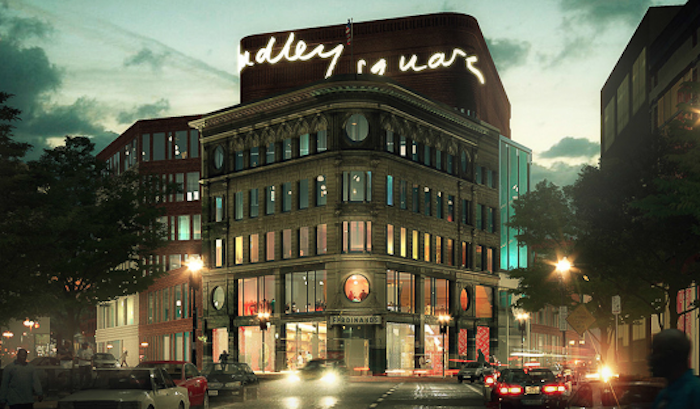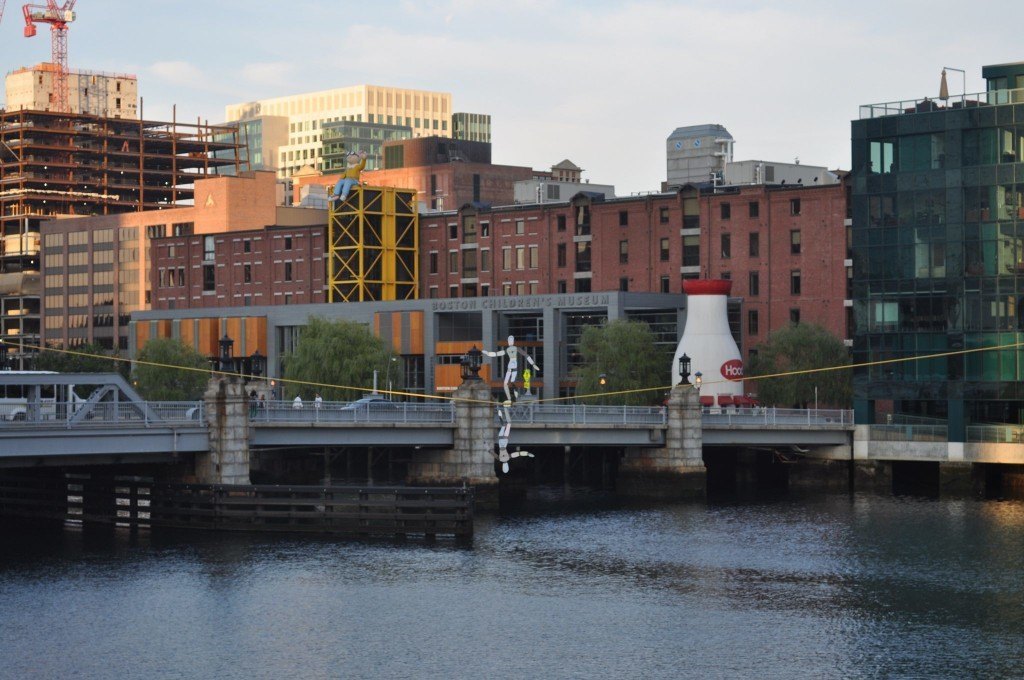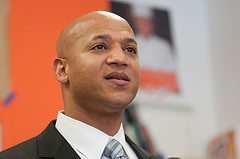
Roxbury’s Bruce C. Bolling Building, known formerly as the Ferdinand Building, has been in development since 2007. The future home of the Boston Public Schools headquarters, the building was envisioned by the late Mayor Tom Menino as the flagship piece to Dudley Square’s revitalization. In his final State of the City address in 2013, the 20-year mayor touted the fact that there was finally a crane over Dudley.
For his part, Mayor Marty Walsh plans to house the Roxbury Innovation Center there, with the intention of starting a ripple effect of creating jobs, a solid innovation economy and a new Innovation District not unlike the one burgeoning on the South Boston waterfront.
But can this goal be accomplished without disrupting those who live, and have lived, in the community for years?
The innovation center will be a roughly 3,000 square feet incubator space while the BPS headquarters will accommodate some 500 employees, work areas for students and special events, and be ground zero for Boston’s tech-driven education initiative, the Digital District.
The City of Boston has invested $115 million in the building itself and there’s about $200 million in approved private development in the pipeline that Mayor Walsh hopes will transform Dudley into a tech hub in its own right.

A look at the established Seaport Innovation District and the effect it’s had on the South Boston real estate market shows one possible outcome for Dudley.
Once known as a blue-collar neighborhood, the price per square foot of Southie homes has skyrocketed of the past several years. According to Zillow data, the average list price per square foot in South Boston was $391 in 2009. As of November 2014, that number ballooned to $529.
It’s important to keep in mind that the Innovation District is not the only factor in determining Southie’s real estate prices. But the explosion of hotels, restaurants, office space and luxury apartments does have an influence over the market.
“A strong real estate market is underpinned in part by the successful businesses and well-paying jobs within it,” Marc Savatsky, founder of boutique real estate brokerage ChooseBoston and ONEin3 member, told BostInno.

Compared to Southie, Roxbury is more under-resourced. That is, residents earn significantly lower incomes on average and less people holder higher-ed degrees. Logic dictates that if Roxbury’s real estate goes the way of Southie’s, residents are more likely to be priced out.
“Assuming the Dudley Square Innovation Center realizes its potential for business growth and job creation, and market conditions remain favorable,” added Savatsky, “prices for rent and prices for ownership in this neighborhood will continue to trend upward.”
Savatsky found that the trend of increasing prices is already underway. In 2014, he realized that brokers mentioned the Dudley Square neighborhood 49 times in their descriptions compared to just 27 the year before. Average condo sale prices also increased about 12 percent from $179,00 in 2011 to $287,000 in 2014.
According to Boston Redevelopment Authority data, based on 2007-2011 American Community Survey 5-Year Estimates, 41 percent of Roxbury households earn an income of less than $20,000. According to the Dudley Street Neighborhood Initiative, the per capita income for the area is closer to $12,332.
“A strong real estate market is underpinned in part by the successful businesses and well-paying jobs.”
Gilad Rosenzweig, the founder and executive director of Smarter in the City, a Dudley-based accelerator, attributes the rise in rent costs directly to the Bolling Building.
“What is happening now in Dudley Square is absolutely influenced by the new Bolling building,” Rosenzweig told BostInno in an email. “The City’s decision to rebuild the Ferdinand and move the school department from Downtown, renovate the bus station, build a new police station, and open up new parcels it owns for development are definitely catalysts for the changes we are now witnessing.”
Though Dudley prices are following the trend of the Innovation District’s, Rosenzweig doesn’t foresee the type of boom witnessed there. Land along the waterfront was significantly more expansive before being redeveloped and Dudley is just one small section of Roxbury.
But he does contend that the proper branding could help expedite Dudley’s transformation.
“The recent buzz about Dudley is making it more attractive, and just like with the South Boston Waterfront, the more you declare an area a district, the more it starts to become one,” he added. “Mayor Menino made a very convincing argument for the Seaport, and the branding helped accelerate what we are witnessing there today.”

Lifelong Dudley resident John Barros, Chief of Economic Development, who served prior as the executive director of the Dudley Street Neighborhood Initiative, is leading the charge in Dudley.
Barros has promoted Dudley’s revitalization so long as it’s not at the expense of community members He says he wants the Roxbury Innovation Center to be part of a larger area where residents, more so than outsiders, can invest in their community.
“In Dudley, what we’ve done is continue to support affordable housing at all levels – low, middle and above,” Barros told BostInno on a phone call. “We’ve met with business owners and building owners, and helped them to make sure they have what they need to invest in Dudley. They’re doing the investments, not someone outside.”
Mayor Walsh publicly released an RFI back in July to hear from the surrounding community how best to use the innovation center and gauge interest in it. He also announced in December that the Massachusetts Technology Collaborative will provide an additional $150,000 in grant funding to support the Innovation Center.
By crowdsourcing ideas from locals and walking the fine line between economic success and gentrification, it’s quite possible that Dudley Square could be the next “it” Boston neighborhood.
The innovation center will occupy the second floor of the Bruce C. Bolling Municipal Building. It’s expected to open early this year and has a five-year lease.
